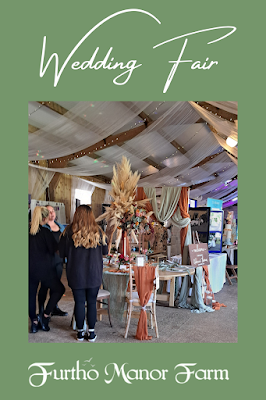The History of Furtho
Furtho Manor Farm has a long history dating back to its existence as a medieval village. It appeared as ‘Forho’ in the 1086 Domesday book, and was likely named after Walter de Furtho, who inhabited the farm after his arrival with William the Conqueror in 1066. The Ancient Parish was 693 acres, bounded by Potterspury and Yardley Gobion on the west, and Cosgrove on the east. There was often conflict between those settled in Furtho and its surrounding areas. In fact, after Edmund Arnold bought the farm in 1662, he was warned that the inhabitants of Cosgrove were prone to stirring up trouble between the two parishes. The church was the central point of the village’s expansion, although its growth remained limited, with the parish never housing more than 46 people. Furtho was subject to enclosure during the early 16th century which led to its depopulation. This was completed in 1572 by Thomas Furtho with the sale of farmlands. In 1921, the parish of Furtho was officially united with that of Potterspury on the grounds that its land area and population was insufficient to warrant its existence as a separate parish. The civil parish survived until 1951, when it was divided between Old Stratford, Potterspury and Cosgrove.
The farm retains just two remaining remnants of the medieval village – the church and the dovecote. St Bartholomew’s Church dates from the 12th Century with various alterations and additions made throughout its history. During the Second World War, the church was used to store the archives of the Northampton Record Society, yet also suffered as a result of the conflict, as it lost its windows due to a bomb explosion. The church was declared redundant on 16th May 1989 and was vested in the Churches Conservation Trust on 7 June 1990. The dovecote was built in the 15th century, in what was, at the time, the front garden of the farmhouse. If you’d like to learn more about these buildings, there is a separate blog post available for each.
The current farm buildings began construction in 1880, when the two cottages were built.. In the 1920s and early 1930s there were a range of improvements made to the farm, including re-roofing the existing buildings, and modernising the cowhouses. In 1997, the stables which were opposite the farmhouse suffered from a fire, leading the buildings to be renovated and converted into the office units as they are today.%20(1800%20%C3%97%20600%20px).png)
The farmhouse itself was only constructed in its current position in 1908. The original farmhouse was next to the dovecote, roughly where the wedding barn is now. The previous farmhouse was seemingly rebuilt in the early 17th Century by Edward Furtho yet by the start of the 20th Century, the building was declared to be unfit for habitation, having not been inhabited for 20 years due to the Agricultural depression. The farmhouse was thus reconstructed in its current position in 1908. Architect W. D Gibbins of Northampton designed a new two storey, five-bedroom house in brick with stone dressings and slate roofs, which still stands today, and the old house was thus demolished. Below you can see
some photos of the previous farmhouse and its position alongside a comparison of Gibbins’ sketch design for the house and it today.
The descendants of Walter de Furtho retained possession of the farm until 1621, when Edward Furtho passed away childless, passing the estate to his surviving sisters, Nightingale Mansel and Anne Staunton and who sold her half in 1625 to Sir Robert Banastre. Banastre died in 1649, leaving his estate to his grandson, who sold the estate in 1666 to Edmund Arnold, a lawyer from London who appointed a group of trustees to take care of the farm after the death of his widow. The son of Edmund Arnold’s eldest brother, challenged the will, contesting that he should receive ownership of the land but was unsuccessful. The trustees leased the farm to a series of tenants and continue to own the farm. During the first world war, the trustees felled some of the timber on the farm and, in accordance with requests from the War Agricultural Committee, ploughed up 25 acres of pasture. In 1933, the farm was let to William John Jones, through the second world war.
Here are some old photos from this time.


In 1969, it was let to David Sansome, who remains a joint tenant with his daughter Linda Welton and son in law Robin Welton.
Today,the Edmund Arnold Trust provides grants for people in need living in Nether Heyford, Stony Stratford and St Giles, Northampton. The 12 trustees consider applications twice a year.
To view even more photos of the venue download our brochure or if you have any questions contact us.
info@furthomanorfarm.co.uk
Call / WhatsApp 07484551115
Sources:
- ‘Furtho’, in A History of the County of Northampton: Volume 5, the Hundred of Cleley,
ed. by Phillip Riden and Charles Insley (London: Victoria County History, 2002), pp.
127-142 https://www.british-history.ac.uk/vch/northants/vol5/pp127-142
- Furtho (2022) <https://en.wikipedia.org/wiki/Furtho#cite_note-
FOOTNOTERidenInsley2002127–142-2> [accessed 22 January 2023]
- Edmund Arnold’s Charity (Poors Branch) (2022) <https://grants-
[accessed 22 January 2023]
- History of Furtho (<http://www.cosgrovehistory.co.uk/doc/furtho/history.html>
[accessed 24 January 2023]
- St Bartholomew’s Church, Furtho (2022)
<https://en.wikipedia.org/wiki/St_Bartholomew%27s_Church,_Furtho> [accessed 24
January 2023]
- Jefford, Will, ‘The lost villages of Northamptonshire abandoned and forgotten’,
NorthantsLive, 16 May 2021 <https://www.northantslive.news/news/history/lost-
villages-northamptonshire-abandoned-forgotten-5405239> [accessed 24 January 2023]
.png)

.png)

Comments
Post a Comment